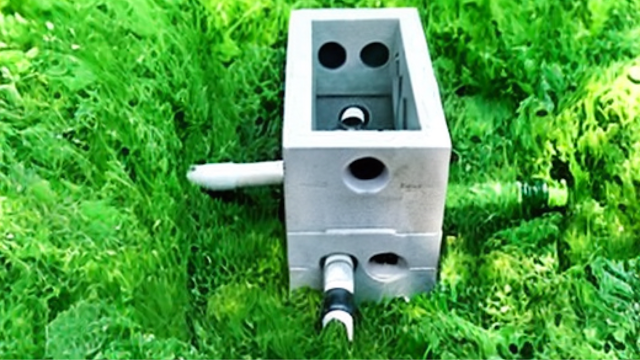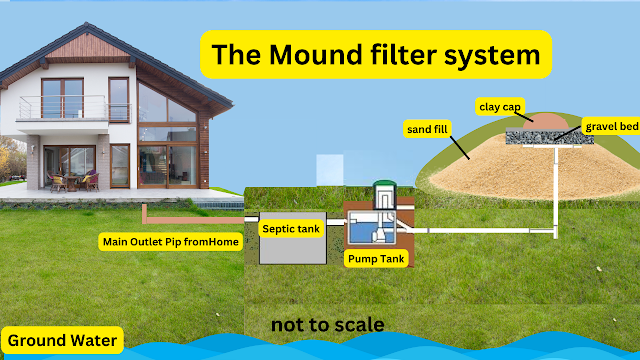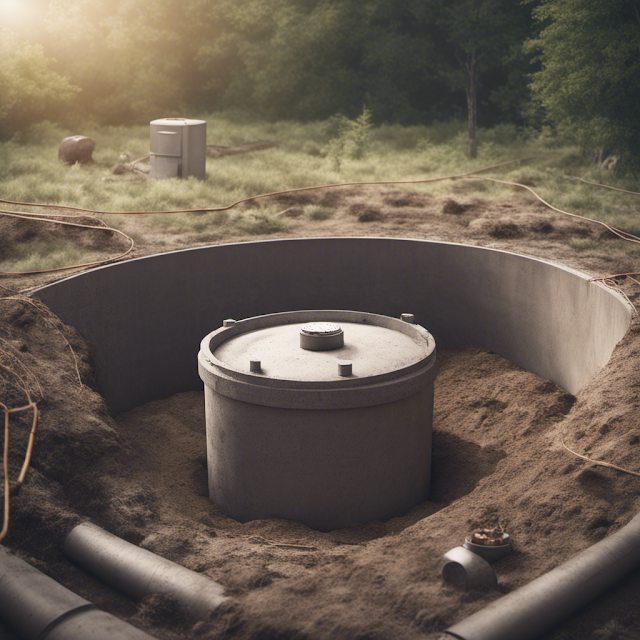The Ultimate Guide to Natural Septic System Cleansing for 2023
 |
| Natural Septic System Cleaning ! |
Introduction
Septic tank woes got you down? Fear not, eco-warriors! We've got the perfect concoction to keep your septic tank in tip-top shape, all while staying true to Mother Nature. Say goodbye to harsh chemicals and hello to a cleaner, greener solution for your septic system. So, how do you clean your septic tank naturally? The short answer: use a blend of baking soda, vinegar, and high-quality bacterial additives.
These mighty, natural ingredients will have your septic tank sparkling (figuratively, of course) in no time. Stick around to unravel the secrets behind these eco-friendly powerhouses and discover tips for long-lasting septic tank bliss.
Unleash your inner DIY enthusiast as we embark on a journey to transform your septic system into an environmentally friendly haven. Let's dive in, and remember: a happy tank makes for a happy home!
Maintaining a healthy septic system is essential for any homeowner, as it ensures the efficient treatment of wastewater and helps prevent costly repairs. This article explores various natural cleansing methods for septic systems that are both safe and effective.
- The Importance of Septic System Maintenance
- Natural Septic System Cleansing Methods
- Baking Soda and Vinegar
- High-Quality Bacterial Additives
- Lemon Juice and Hot Water
Additionally, we'll provide some best practices for optimal septic system performance. We will also look at the following:
- Septic System Best Practices
- Signs of Septic System Failure
- Environmental Impact of Septic System Malfunction
- Greywater Recycling and Septic System Health
- Impact of Soil and Site Conditions on Septic System Performance
- Regular Septic System Inspection What to Expect,
- The Role of Septic Tank Filters in Maintaining System Health
- Drain Field Maintenance and Restoration Techniques
- The Importance of Proper Septic System Design and Installation
- Risks Associated with DIY Maintenance
- Local Regulations and Permit Requirements for Septic Systems
Have you wondered how to clean a septic tank naturally, we give you our expert opinions from your Septic Tank Industry Veterans
Navigating the labyrinth of septic systems can be a daunting task, but fear not! With a combined experience spanning over four decades, my better half Jeane and I have conquered numerous challenges and tackled various situations in this complex world.
Our mission is to share our invaluable knowledge with both veteran septic system owners and newcomers alike. This blog is devoted to delivering essential insights and tips on a range of topics, including the ever-popular how to clean septic tank naturally.
We aim to help you unravel the secrets of maintaining an eco-friendly, high-performing septic system for the long haul. Join us on this enlightening adventure as we delve into the captivating realm of green septic system solutions!
The Importance of Septic System Maintenance
Regular septic system maintenance is crucial to prevent the buildup of harmful substances and ensure smooth operation. Inadequate maintenance can lead to system failure, resulting in unpleasant odors, backed-up drains, and even contamination of nearby water sources. Moreover, proper maintenance can extend the life of your septic system and save you from expensive repairs or replacement.
Natural Septic System Cleansing Methods
Here are three effective, natural cleansing methods that can help you maintain a healthy septic system without the use of harsh chemicals:
Baking Soda and Vinegar
Baking soda and vinegar are a powerful combination for cleansing your septic system. They work together to break down grime, dirt, and organic materials, while also neutralizing odors. To use this method, follow these steps:
Mix one cup of baking soda with two cups of white vinegar.
Pour the mixture down a toilet or sink drain.
Flush the toilet or run the sink for a few seconds to ensure the solution enters the septic system.
Perform this natural cleanse once a month to maintain a healthy and efficient septic system.
High-Quality Bacterial Additives
Introducing high-quality bacterial additives to your septic system can help break down solid waste and maintain the balance of beneficial bacteria. These additives contain live bacteria that digest and decompose organic materials, ensuring optimal system performance. To use bacterial additives:
Choose a reputable, high-quality bacterial additive product.
Follow the manufacturer's instructions for dosage and application.
Apply the additive to your septic system regularly, as directed by the product's guidelines.
Lemon Juice and Hot Water
Lemon juice and hot water can effectively cleanse your septic system while also eliminating odors. The citric acid in lemon juice breaks down organic materials, while the hot water helps flush the system. To use this method:
Squeeze the juice of two large lemons into a container.
Mix the lemon juice with a gallon of hot water.
Pour the solution down a toilet or sink drain.
Flush the toilet or run the sink to ensure the mixture enters the septic system.
Perform this cleanse every three months for optimal results. Now we need to look at all the other aspects we need to consider to keep our septic Systems in tip top condition.
Septic System Best Practices
To keep your septic system functioning efficiently, follow these best practices:
Schedule regular septic system inspections and pumping every 3-5 years.
Conserve water by using low-flow fixtures and repairing leaks promptly.
Avoid flushing non-biodegradable items, such as wipes, feminine hygiene products, and diapers, down the toilet.
Limit the use of garbage disposals, as they can introduce excess solids and grease into the septic system.
Refrain from using harsh chemicals or antibacterial cleaners, which can disrupt the balance of beneficial bacteria in the system.
Keep heavy vehicles and equipment away from your septic system, as they can cause damage to the tank and drain field.
Plant only grass or shallow-rooted plants over your drain field to prevent root intrusion and ensure proper absorption of effluent.
Dont put these down your toilet
Signs of Septic System Failure
It's crucial to recognize the signs of septic system failure to address any issues before they escalate. Common indicators include:
Foul odors near the septic tank or drain field
Slow-draining sinks, tubs, and toilets
Gurgling sounds in plumbing fixtures
Wet or soggy areas around the septic tank or drain field
Sewage backup in toilets, sinks, or tubs
If you notice any of these signs, contact a professional septic system service provider immediately.
Environmental Impact of Septic System Malfunction
A malfunctioning septic system can have significant environmental consequences, such as:
Contamination of groundwater and nearby water sources with harmful bacteria and viruses
Nutrient pollution, leading to algae blooms and oxygen depletion in water bodies
Soil degradation due to excessive leaching of untreated effluent
Proper septic system maintenance helps protect the environment and public health.
 |
| contaminated water from septic tank |
Greywater Recycling and Septic System Health
Greywater recycling is the process of reusing water from sinks, showers, and washing machines for non-potable purposes like irrigation. Implementing greywater recycling can benefit your septic system by:
Reducing the volume of wastewater entering the septic system
Minimizing the risk of system overload and failure
Decreasing the frequency of septic tank pumping
Consult a professional to assess the feasibility of integrating greywater recycling into your septic system.
Impact of Soil and Site Conditions on Septic System Performance
Soil type and site conditions play a critical role in septic system performance. Factors to consider include:
Soil permeability: Sandy soils provide good drainage, while clay soils may impede the absorption of effluent.
Water table depth: A high water table can affect septic system function and increase the risk of contamination.
Slope: Steep slopes may require additional engineering solutions to ensure proper septic system installation.
Consult with a qualified professional to assess your property's soil and site conditions.
Regular Septic System Inspection: What to Expect
During a regular septic system inspection, a professional will:
Examine the tank for leaks, cracks, and signs of deterioration
Check the tank's liquid level and assess the need for pumping
Inspect the drain field for signs of failure or saturation
Evaluate the overall system performance and recommend any necessary repairs or maintenance
A routine inspection can identify potential issues early and help you avoid costly repairs.
Septic Tank Maintenance for Homeowners
The Role of Septic Tank Filters in Maintaining System Health
Septic tank filters play a vital role in maintaining system health by:
Preventing solid waste from entering the drain field
Reducing the risk of clogging and system failure
Extending the life of your drain field
Regular cleaning and maintenance of septic tank filters are essential for optimal system performance.
Drain Field Maintenance and Restoration Techniques
Proper drain field maintenance is crucial for septic system health. Techniques include:
Regular inspection for signs of saturation or failure
Avoiding excessive water usage to prevent system overload
Planting shallow-rooted vegetation to promote evaporation and prevent erosion
If your drain field requires restoration, consult a professional for solutions such as soil fracturing or drain field replacement.
The Importance of Proper Septic System Design and Installation
A well-designed and correctly installed septic system ensures efficient wastewater treatment and minimizes the risk of failure. Key considerations include:
Accurate sizing of the septic tank and drain field based on household size and water usage
Appropriate selection of materials and components for long-lasting performance
Compliance with local regulations and permit requirements
Hire a qualified professional to design and install your septic system for optimal results.
Risks Associated with DIY Maintenance
While some homeowners may be tempted to tackle septic system repairs and maintenance themselves, there are several risks associated with DIY efforts:
Inadequate knowledge of septic system components and their functions, leading to ineffective repairs or further damage
Personal health and safety hazards, such as exposure to harmful bacteria and gases
Non-compliance with local regulations and permit requirements
To ensure the proper function and longevity of your septic system, it's best to hire a professional for repairs and maintenance.
Local Regulations and Permit Requirements for Septic Systems
Compliance with local regulations and permit requirements is essential when installing, repairing, or maintaining a septic system. Common aspects regulated by local authorities include:
Septic system design and installation standards
Minimum setbacks from property lines, water sources, and structures
Requirements for regular inspections and pumping
Guidelines for septic system repair or replacement
Consult your local health department or environmental agency for specific regulations and permit requirements in your area. Adhering to these guidelines will help ensure the proper function and longevity of your septic system while protecting public health and the environment.
Conclusion
To round off remember proper maintenance of your septic system is essential to ensure its efficiency and longevity. Natural cleansing methods, such as baking soda and vinegar, high-quality bacterial additives, and lemon juice with hot water, are safe and effective ways to maintain a healthy system. By combining these natural cleanses with septic system best practices, you can prevent system failure, extend the life of your system, and save money on costly repairs. Don't forget to do it regularly.https://www.epa.gov/septic/septic-systems-reports-regulations-guidance-and-manuals
https://www.ncbi.nlm.nih.gov/pmc/articles/PMC8386885/
https://www.ncbi.nlm.nih.gov/pmc/articles/PMC7037211/
https://www.sciencedirect.com/science/article/pii/S0048969715312353
https://en.wikipedia.org/wiki/Septic_tank
.png)



.png)






Comments
Post a Comment